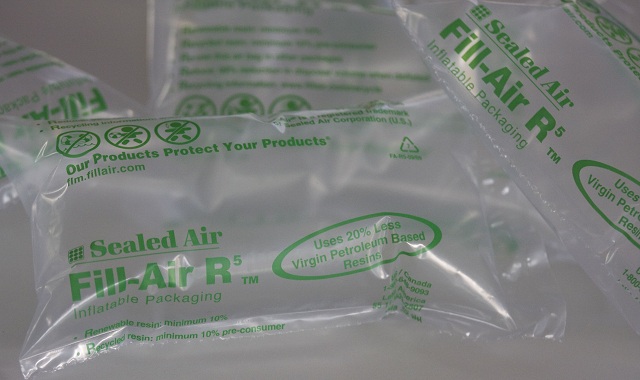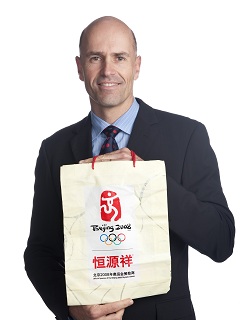Interview: Frank Glatz, M.D. Of Cardia Bioplastics Talks About Innovations In Sustainable Packaging
Date Added: May 29, 2012
By Gary Thomas
1. Could you please provide a brief introduction to the industry Cardia Bioplastics works within and an outline of the key drivers?
Cardia Bioplastics works within the packaging industry. Packaging is a major global industry that affects people’s day-to-day lives, but it is often not given enough attention. When most people walk into a supermarket, they see food-I see packaging!
Frank Glatz, Managing Director
Of Cardia Bioplastics. Image Credit:
Cardia BioplasticsPackaging is an industry that will continue to grow, as people consume more and more prepared, convenience food, which requires more and more packaging. In fact, a country’s development can often be measured by the amount of packaging used in that country.
Furthermore, many packaging products still rely heavily on oil in the manufacturing process, which is a finite resource. This is of course unsustainable and there is a big debate currently, especially in western continental Europe, about how this dependence on fossil fuel can be reduced. A move towards sustainability from an input perspective appears to be the logical step.
2. Could you please give a brief overview of Cardia Bioplastics?
Cardia Bioplastics is an Australian-based, global company engaged in producing sustainable packaging, i.e. packaging that requires less oil and/or is compostable. The two main areas of focus for Cardia are Biohybrid resins and Compostable resins.
The compostable resins are completely biodegradable and meet all major international standards for compostability. Typical uses for these include shopping bags, organic waste bags and agricultural films.
The unique Biohybrid packaging is designed to be functional and competitively priced, as well as environmentally friendly with a reduced carbon footprint. These can increase the renewable content of your products by up to 50% and are produced from non-GM starch.
We are a global distributor and have worked with many of the world’s most famous companies. We have offices based across the world, from Canada to Germany and China.
3. The Cardia Biohybrid resin is an innovative sustainable resin-could you explain what constitutes a sustainable resin?
The term sustainable simply means a product that can be produced well into the future without damaging the environment. For example, using oil to produce plastics is not sustainable as oil is finite.
The best way to look at whether a product is sustainable or not is to perform a ‘life cycle assessment’-looking at the product from its cradle (raw material production) to its grave (waste management) and trying to assess whether it is economically and environmentally viable. From our perspective, as our resin is sourced from industrial corn starch which will absorb CO2 via photosynthesis, the product is sustainable.
4. How is the Cardia Biohybrid resin unique?
It is environmentally proven to be beneficial whilst still maintaining very high performance specifications. The way it has been produced means these properties have been perfected, and the fact it was used during the Beijing Olympics and by globally leading brand owners proves that it is something special.
5. Do the Biohybrid resins have the same physical properties as conventional plastics, and are there any physical advantages to using them?
In terms of most packaging the physical properties are similar to those of normal plastics.
However it has an advantage over conventional plastics in the field of hygiene packaging because it is inherently softer. For instance, Biohybrid resin is starting to be utilised in the U.S. in the manufacturing of babies’ diapers.
6. Can Biohybrid plastics be recycled in a similar way to conventional plastic?
Yes. It has been independently validated that Biohybrid products can be introduced into a normal recycling stream with no negative impact.
7. Could you give a brief overview of the manufacturing process behind the Biohybrid resin?
We are extremely proud of the manufacturing process behind Biohybrid resin and we have a lot of intellectual property associated with this.
In essence the resin is produced from corn starch using extrusion technology. This is a complex process and we have 29 separate patents associated with it!
8. Cardia Bioplastics will be supplying Sealed Air Corporation with resin for Fill-Air R5 inflatable packaging. Could you explain why this packaging is innovative and how it could change international packaging?
The ‘R5’ product is so named because of the 5 factors that it is based on, making it a positive revolution in the packing industry. These ‘five R’s’ are Renewable source, Recycled content, Reduce material, Reuse and Recycled. The packaging is designed to create air-filled cushions to protect goods during transport by filling voids. It is like a futuristic bubble-wrap!
The new Fill-Air R5 packaging set to revolutionise international deliveries. Image credit: Cardia Bioplastics
9. Who are some of the other major customers that have used your products?
Frank Glatz with an official,
biodegradable bag from the 2008
Olympics. Image Credit: Cardia BioplasticsOur products have been used by many large companies across the world. We have worked with McDonalds, KFC and Nestlé S.A., among many others. We are particularly proud of our work with the Beijing Olympics in 2008, where we were the exclusive supplier of biodegradable packaging to both the Olympic and Paralympic games.
10. What other products are available from Cardia Bioplastics?
The two main areas that we work within are Biohybrid resins and Compostable resins, which can be used for anything from carrier bags to magazine wrapping.
However we also produce wholesale and retail products. These include kitchen tidy bags, which we hope will encourage people to compost organic waste and get it out of landfills. With our tidy bags, people can fill the bag with organic waste and send it directly for composting. As the bag itself is fully compostable, there are no extra steps involved.
11. How do you see the future of plastic production progressing over the next 10 years?
"10 years ago, I would have to explain the term ‘sustainability’-I rarely have that problem now..."
Frank GlatzThe entire packaging industry needs to focus on the 3 key areas of performance, price and environment. Over the next 10 years companies will be attempting to optimise production regarding these areas; attempting to get a higher performance at a lower cost, and at the same time reducing our dependency on oil.
The future is looking bright for ‘clean’ packaging-when I was working in this industry 10 years ago, I would have to explain to people what we mean by the term sustainability-I rarely have this problem now! I believe sustainable packaging will only continue to increase in popularity and importance over the next 10 years.
Interview: Frank Glatz, M.D. Of Cardia Bioplastics Talks About Innovations In Sustainable Packaging
Add to My Watchlist
What is My Watchlist?







